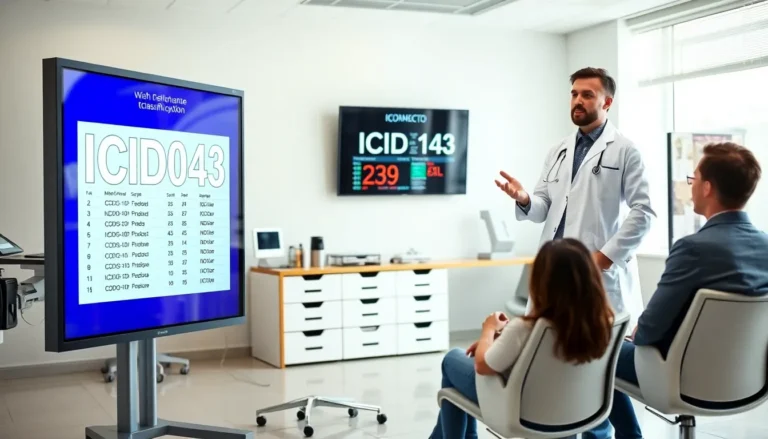Table of Contents
ToggleIn a world where education often feels like a game of dodgeball, learning recovery funding swoops in like a superhero ready to save the day. After years of navigating the ups and downs of remote learning and classroom chaos, schools now have a golden opportunity to bounce back and help students reclaim lost ground. It’s like finding a forgotten $20 bill in an old coat—unexpected and oh-so-welcome!
Understanding Learning Recovery Funding
Learning recovery funding serves as essential support for schools facing the aftermath of remote learning and disruptions. This funding aims to address learning gaps and bolster educational resources.
Definition and Purpose
Learning recovery funding refers to designated financial resources allocated to schools to assist with educational recovery efforts. The primary purpose involves enhancing student engagement, academic achievement, and overall educational outcomes. Schools can utilize these funds for targeted programs, tutoring services, and additional instructional materials. By leveraging such funding, educators strive to rebuild lost educational time and improve learning environments for all students.
Importance in Education
Learning recovery funding plays a vital role in the broader educational landscape. It ensures that students affected by disruptions receive the necessary support to thrive. Investments in targeted programs aim to reduce disparities and promote equitable access to quality education. Access to additional resources empowers teachers to implement innovative strategies that meet diverse student needs. Studies indicate that schools utilizing recovery funding effectively experience significant improvements in student performance and well-being.
Sources of Learning Recovery Funding
Learning recovery funding comes from various sources that play significant roles in supporting educational recovery efforts. These funds come from federal initiatives, state programs, and local contributions.
Federal Funding Initiatives
Federal funding initiatives provide substantial financial assistance for learning recovery. The American Rescue Plan allocates $122 billion specifically for elementary and secondary education, aimed at helping schools respond to the impacts of COVID-19. This initiative emphasizes student recovery, enhancing mental health support, and improving academic outcomes. Additionally, programs like Title I and Individuals with Disabilities Education Act offer dedicated funds to assist schools in under-resourced areas. These federal resources equip institutions with the tools necessary for effective recovery programs.
State and Local Contributions
State and local contributions significantly augment federal funds for learning recovery. Many states have implemented their recovery funds, focusing on specific educational needs within their jurisdictions. Local districts often match or supplement state funds, ensuring tailored interventions that meet community requirements. For instance, states may provide grants for summer learning programs or after-school tutoring initiatives. These contributions help bridge funding gaps and create comprehensive strategies for addressing learning losses, thereby maximizing support for students.
Implementing Learning Recovery Funding
Learning recovery funding presents schools with a unique opportunity to enhance educational environments and support student success. Schools must strategically deploy these funds for maximum impact.
Strategies for Effective Use
Utilizing learning recovery funding effectively hinges on targeted interventions. Schools should prioritize tutoring programs, as personalized instruction boosts student understanding. Additionally, investing in mental health services helps address emotional barriers to learning. Engaging communities fosters partnerships that enrich educational efforts. Providing teachers with professional development ensures they are equipped with innovative teaching strategies. Lastly, assessing student progress regularly aids in refining approaches based on data-driven insights.
Challenges in Implementation
Implementing learning recovery funding faces several obstacles. Budget restrictions may limit a school’s ability to deploy these funds effectively. Furthermore, navigating compliance requirements can create administrative burdens that slow progress. Limited community engagement might hinder successful program rollouts. Schools also grapple with staffing shortages, which can affect the delivery of essential services. Lastly, aligning recovery goals with district policies often proves complex, requiring persistent communication and collaboration.
Impact of Learning Recovery Funding
Learning recovery funding significantly influences educational outcomes by enabling targeted support for students. Schools leverage these financial resources to implement effective programs that address the specific needs of their communities.
Case Studies and Success Stories
Many districts demonstrate the positive effects of learning recovery funding. For instance, one district utilized funds to develop an after-school tutoring program that improved math scores by over 30% in six months. Another community invested in social-emotional learning initiatives, leading to a 25% reduction in behavioral incidents. Success stories like these exemplify how targeted interventions enhance student engagement and achievement.
Measurable Outcomes
Quantifiable results emerge from effective use of learning recovery funding. Studies indicate that schools focusing on intense individual tutoring programs saw an increase of 20% in reading proficiency within a year. Additionally, districts investing in mental health services reported improved student attendance rates by 15%. These measurable outcomes highlight the potential of recovery funding to drive academic success and foster a supportive learning environment.
Learning recovery funding stands as a vital resource for schools striving to overcome the educational setbacks caused by recent disruptions. By channeling these funds into targeted programs and support services, schools can create enriched learning environments that cater to the diverse needs of students.
The collaborative nature of funding from federal, state, and local sources ensures that schools have the necessary tools to implement effective recovery strategies. As educational institutions continue to adapt and innovate, the successful deployment of recovery funding will play a crucial role in enhancing student engagement and academic performance.
Ultimately, investing in learning recovery not only addresses immediate challenges but also lays the groundwork for a more equitable and effective education system for all students.







